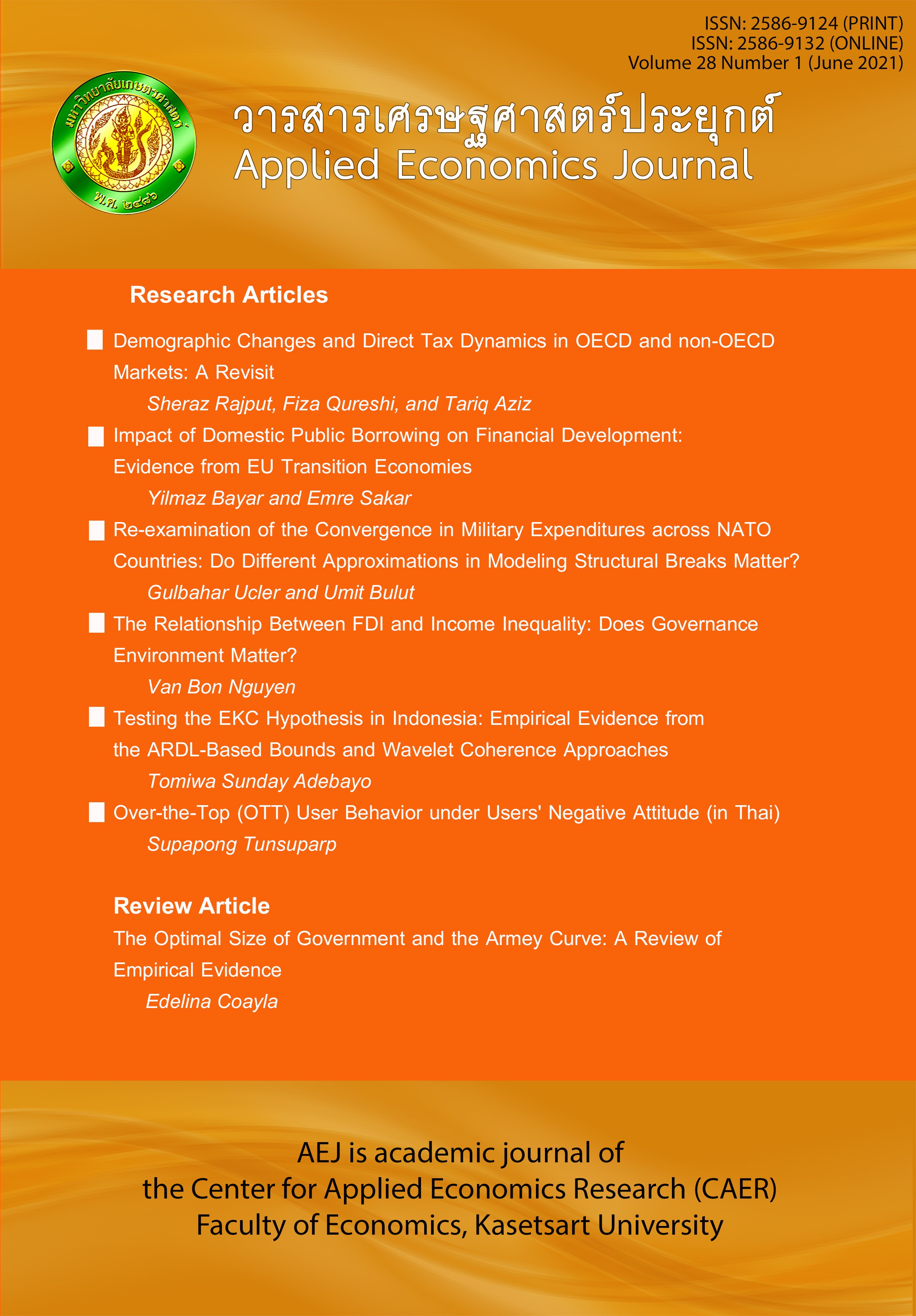Demographic Changes and Direct Tax Dynamics in OECD and Non-OECD Markets: A Revisit
Main Article Content
Abstract
This study investigates the dynamic relationship between demography and direct taxes on income, profit, and capital gains. The data, for the period 1990–2017, encompass 89 OECD and non-OECD countries. The study employs generalized method of moments (GMM) estimation to identify the relationships. The findings suggest a U-shaped correlation in OECD countries, which supports the argument that a rise in the aging population initially decreases taxes on income, profit, and capital gains. Conversely, any further rise in the aging population after reaching a certain threshold leads to increased taxes on income, profit, and capital gains. Furthermore, across non-OECD countries, the findings suggest an inverted U-shaped relationship implying that the labor income tax rate will fall with a rise in the dependency ratio until the aged population constitutes half of all voters, but the correlation between these variables becomes positive if the number of aged people reaches 50% of voters or more. The findings lead to the suggestion that other potential factors, such as empathy among family members, as opposed to political muscle only may affect voters’ behavior in a median voter model.
Article Details
The paper is published under CC BY-NC-ND, in which the article is freely downloaded and shared in its original form non-commercially and its citation details are identified.
References
Bryant, J. (2003). Modelling the effect of population ageing on government social expenditures (New Zealand Treasury Working Paper No. 03/15). Wellington: New Zealand Government, The Treasury.
Daveri, F., & Tabellini, G. (2000). Unemployment, growth and taxation in industrial countries. Economic Policy, 15(30), 48–104.
Disney, R. (2007). Population ageing and the size of the welfare state: Is there a puzzle to explain? European Journal of Political Economy, 23(2), 542–553.
Facchini, G., Razin, A., & Willmann, G. (2004). Welfare leakage and immigration policy. CESifo Economic Studies, 50(4), 627-645.
Galasso, V., & Profeta, P. (2007). How does ageing affect the welfare state? European Journal of Political Economy, 23(2), 554–563.
Glaser, W. A. (1959). The family and voting turnout. Public Opinion Quarterly, 23(4), 563–570.
Huckfeldt, R., & Sprague, J. (1991). Discussant effects on vote choice: Intimacy, structure, and interdependence. Journal of Politics, 53(1), 122–158.
Meltzer, A. H., & Richard, S. F. (1981). A rational theory of the size of government. Journal of Political Economy, 89(5), 914–927.
Nickerson, D. W. (2008). Is voting contagious? Evidence from two field experiments. American Political Science Review, 102(1), 49–57.
Niemi, R. G., Hedges, R., & Jennings, M. K. (1977). The similarity of husbands’ and wives’ political views. American Politics Quarterly, 5(2), 133–148.
Oeppen, J., & Vaupel, J. W. (2002). Broken limits to life expectancy. Science, 296(5570), 1029-1031.
Persson, T., & Tabellini, G. E. (2005). The economic effects of constitutions. Massachusetts: MIT Press.
Pickering, A., & Rajput, S. (2018). Inequality and the composition of taxes. International Tax and Public Finance, 25(4), 1001–1028.
Razin, A., Sadka, E., & Swagel, P. (2002). The aging population and the size of the welfare state. Journal of Political Economy, 110(4), 900–918.
Rodrik, D. (1998). Why do more open economies have bigger governments? Journal of Political Economy, 106(5), 997–1032.
Shelton, C. A. (2007). The size and composition of government expenditure. Journal of Public Economics, 91(11–12), 2230–2260.


